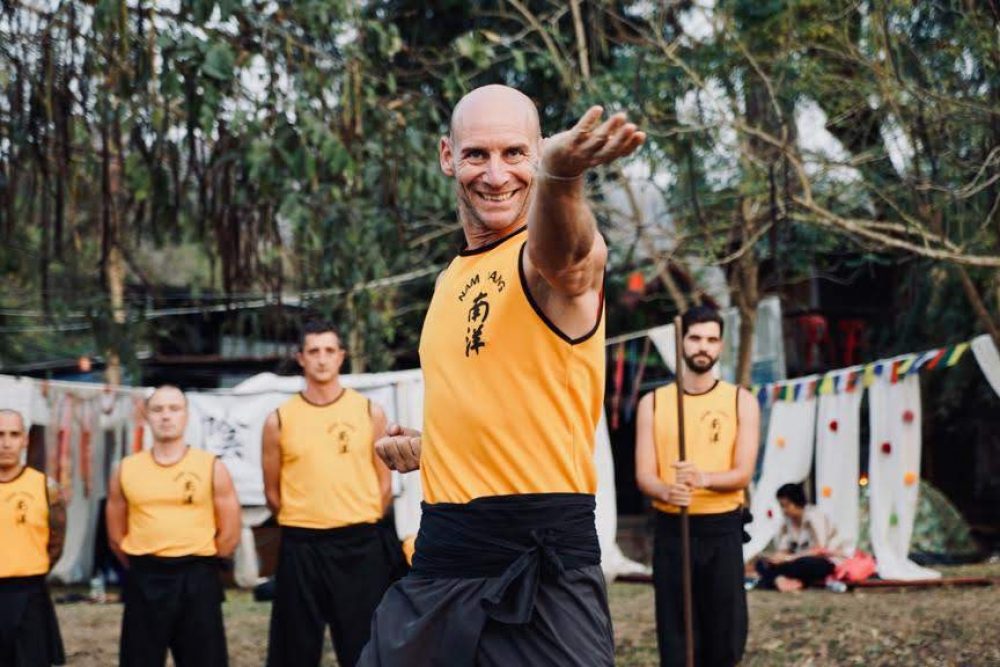The Tiger Crane Combination art is stems from a time of great turmoil in China: a time of conflict and danger. A time when, for a martial artist, death was a constant threat. Hence it is very direct in its fighting application. It has never been intended for ‘sports’ fighting. To modern sensibilities its techniques may seem brutal but to the kung fu masters of old they could mean the difference between life and death.
Every good martial art has a strategy. Ours is to immediately make contact with an opponent and not to let go that contact until the opponent is beaten. This is summed up in the saying:

‘If you have no bridge, build your self a bridge.
If you have a bridge, follow the bridge across.
If you have no bridge build one.
Let your enemy pass then destroy the bridge.’
So, like many Chinese martial arts, we train to stick to an opponent and fight from close range. This means that we react to touch rather than to sight. The advantage, of course, is that reaction to touch is very, very much faster. A fighter with good touch sensitivity, once in contact with an opponent, is unlikely to be hit by stray blows or miss something coming. Obviously if we can just strike directly at an opponent we do. This builds a bridge. We do not then move out, though, we stay inside our opponent’s guard.
One of our sayings is ‘show your strengths, hide your weaknesses’.
We do not present our vulnerable points as targets. Once we know where the body is weak and how the weak points can be attacked then simply by observing an opponent we know how and where to attack. My teacher Master Tan Soh Tin, often said to me ‘I need only to teach you how to defend. A man who truly understands defence will always know how to attack.’
Our strikes are delivered with ‘geng’ – springy elastic energy released from the fascia. This allows us to strike from very short range not only with a high level of power but also with a power that penetrates deep into an opponent’s body so as to damage the vulnerable internal organs. To deliver this power we train a deeply rooted stance from which we derive great leverage. Hence the importance we place on stance training.
Like most of the martial arts of Fukien province, we keep our elbows tucked in when we defend. This gives us extremely good leverage whilst at the same time defending our side ribs. We keep our bodies square to the front. This enables us to use both arms and both legs with full effect. The price of this advantage is that our centre line targets can be struck with direct, straight attacks. Hence we must have very strong defensive movements to intercept attacks which an opponent might throw at us. Once we have established touch contact, however, being able to use both arms is a massive advantage.


Respect your teachers, Respect your art – Created by Andrew, Senior Instructor at Nam Yang Kung Fu Retreat
Although we train our bodies to be strong, we train to be able to fight without using great physical strength. This way we can still overcome a bigger, stronger opponent, even when we are old.
There is a great deal more than this to the Tiger – Crane Combination art but to fully understand it takes much time and effort.
An article written by Master Iain in 2015.
Link to article: https://kungfuretreat.com/fighting-strategy-of-the-tiger-crane-combination-art/

